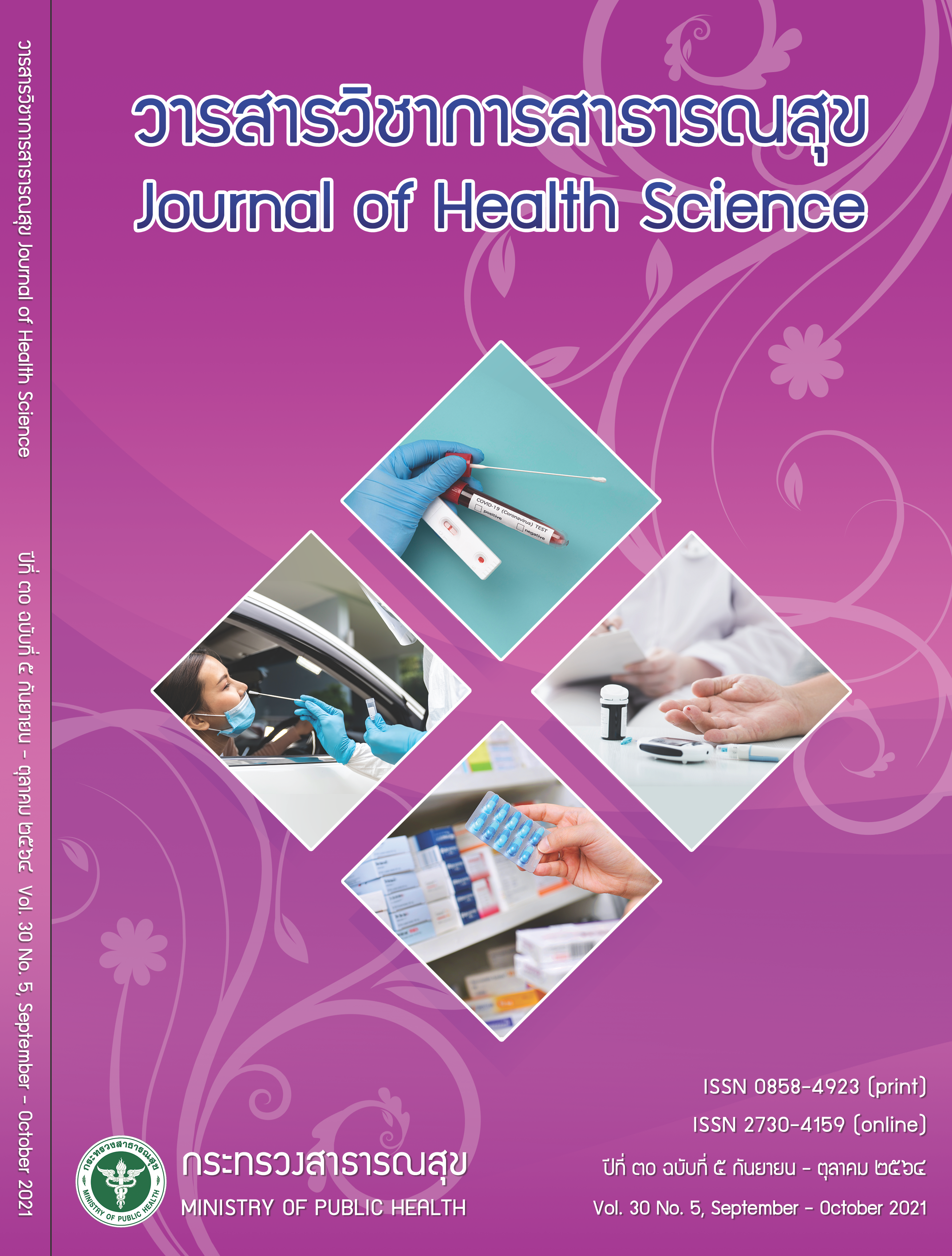Health Risk Assessment of Fresh Chillies with Residual Insecticides in Health Region 6
Keywords:
insecticide, fresh chillies, health risk assessment, Health Region 6Abstract
Chillies are spice that are commonly consumed by Thai people. Insecticides are often used in chilli cultivation to reduce its production losses. This study aimed to analyse for the presence of insecticide residues in fresh chillies sold in the market in Health Region 6, and to assess the health risks associated with insecticides residues by fresh chillies consumption. It was conducted in 2018 at the Regional Medical Sciences Center 6, Chonburi Province. Fresh chillies were analysed for the presence of organophosphorus, organochlorines and synthetic pyrethroids by gas chromatograph (GC) and carbamates by high performance liquid chromatograph (HPLC). There were 160 fresh chilies samples: 72 Chinda red chillies, 41 Chinda green chillies and 47 bird chillies. It was found that insecticide residues were detected in 124, 65, 30 and 29 of the 3 chili samples (77.50, 90.28, 70.73 and 63.83%), respectively. They were 3 groups with 13 types of insecticides identified including cypermethrin, chlorpyrifos, profenofos, l-cyhalothrin, carbaryl, carbofuran, triazophos, ethion, methomyl, acephate, aldicarb, oxamyl and methiocarb. The predominant insecticides were cypermethrin (27.22%) and chlorpyrifos (25.00%). Many single samples contained multiple insecticides, as 1, 2, 3, 4, 5, 6 and 8 types of insecticides were found in 29.84, 28.23, 16.13, 13.71, 8.87, 2.42 and 0.81% of samples, respectively. Ethion and cypermethrin were found in excess of maximum residue limit (MRL) in 1.88% of the samples. Risk assessment revealed that both male and female consumers aged 3 years and older were not at risk of non-cancer illness when consumed such fresh chillies contaminated with residual insecticides at the average daily intake (HQ and HI <1). To reduce the risk, however, consumers should always wash fresh chillies before cooking or eating.
Downloads
Downloads
Published
How to Cite
Issue
Section
License

This work is licensed under a Creative Commons Attribution-NonCommercial-NoDerivatives 4.0 International License.







